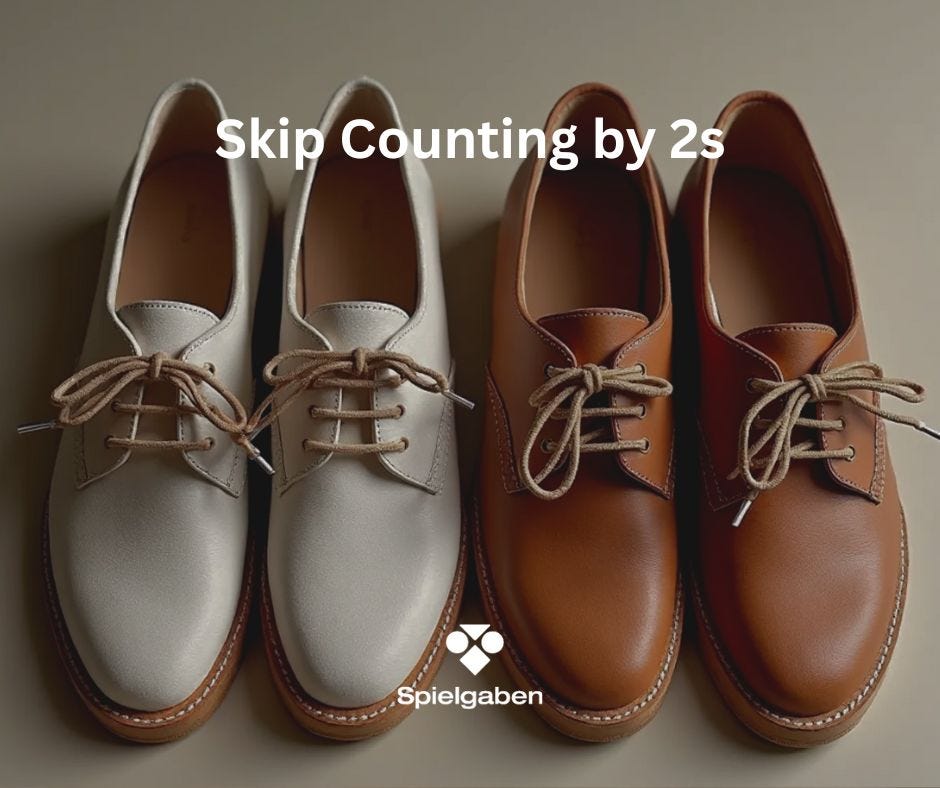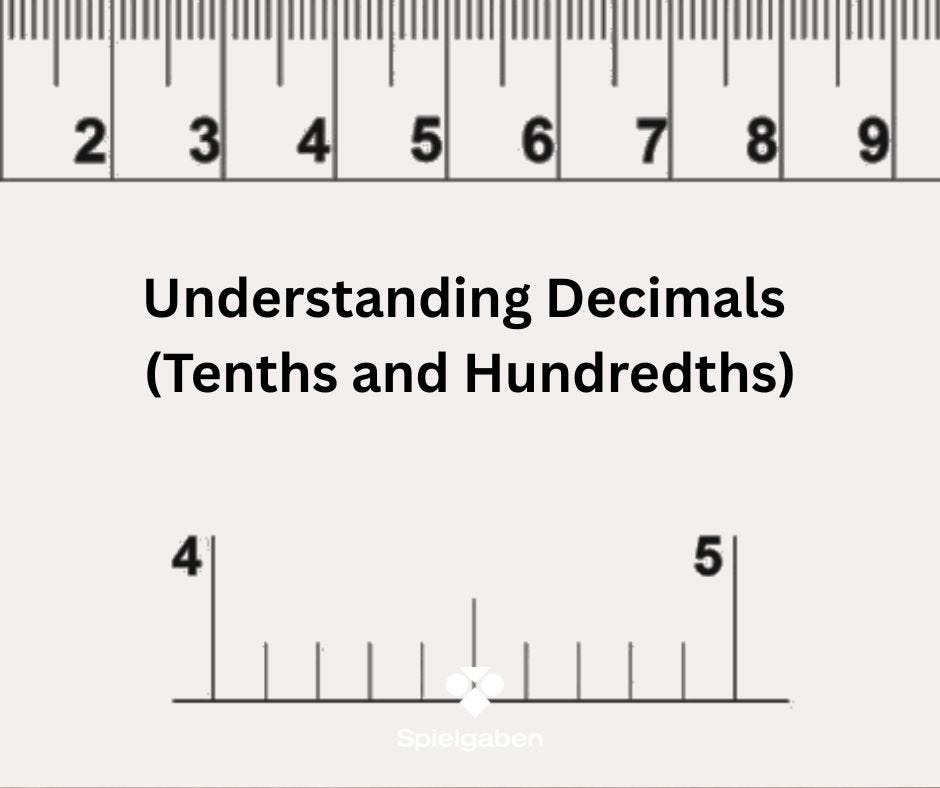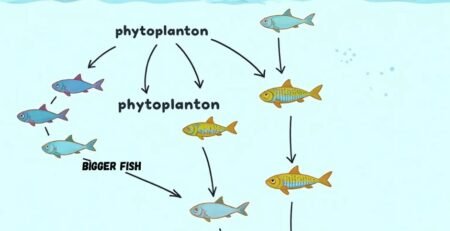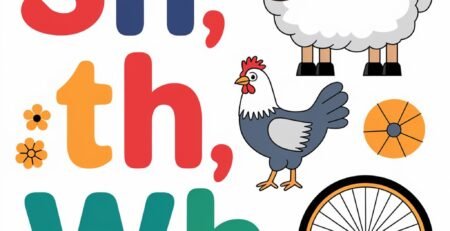19May
Lesson Plan > Lesson 52 > Mathematics
Lesson 52 covers:
- Elementary Level: Skip Counting by 2s
- Mid Level: Understanding Decimals (Tenths and Hundredths)
- High Level: Solving Inequalities (One-Step)
Elementary Level (Kinder to Grade 2)

Subject: Skip Counting by 2s
1. Alignment with Standards:
- CCSS.MATH.CONTENT.1.OA.C.5: Relate counting to addition and subtraction.
- CCSS.MATH.CONTENT.1.NBT.A.1: Count to 120, starting at any number less than 120.
2. Learning Objectives:
By the end of the lesson, students will be able to:
- Count by 2s up to 20 (or beyond if ready).
- Recognize patterns when skip counting by 2s (e.g., all numbers are even).
- Apply skip counting to real-world scenarios (e.g., counting pairs of socks, shoes, etc.).
3. Materials Needed:
- Number chart (1-20 or 1-30)
- Flashcards with numbers (highlighting multiples of 2)
- Small objects (buttons, coins, or beads)
- Printable worksheets (skip counting sequences with missing numbers)
Lesson Structure
1. Warm-Up (5-10 min) – Counting Review
- Activity: Count from 1 to 20 together.
- Question: “What do you notice about these numbers?” (Introduce even/odd if ready.)
- Visual Prompt: Show an image of pairs of shoes (e.g., 2 shoes, 4 shoes, 6 shoes).
- “How many shoes are there if we have 3 pairs?” (Guide them to count: 2, 4, 6.)
2. Direct Instruction (10 min) – Introducing Skip Counting
- Demonstration:
- Write numbers 2, 4, 6, 8, 10… on a whiteboard.
- Point out the pattern: “We’re jumping over one number each time!”
- Hands-On Practice:
- Use small objects (buttons, beads) to group in pairs.
- Count aloud: “2, 4, 6…” as they place each pair down.
3. Guided Practice (10-15 min) – Interactive Activities
- Number Line Hop:
- Lay out a number line (1-20) on the floor.
- Have the child jump on multiples of 2 while saying the numbers.
- Flashcard Game:
- Mix up number cards and have the child sort them in order by 2s.
- Ask: “What comes after 10 when counting by 2s?”
4. Independent Practice (10 min) – Worksheet & Application
- Worksheet: Fill in missing numbers (e.g., 2, _, 6, _, 10).
- Real-World Connection:
- “If you have 5 pairs of socks, how many socks are there?” (Encourage counting by 2s: 2, 4, 6, 8, 10.)
5. Wrap-Up & Assessment (5 min)
- Verbal Check:
- “Can you count to 20 by 2s without help?”
- Exit Question:
- “Why is counting by 2s helpful?” (Possible answer: “It’s faster than counting one by one!”)
Extension Activities (Optional)
- Song/Videos: Use YouTube songs like “The Counting by Twos Song” by Scratch Garden.
- Movement Game: Clap or stomp every time you say a number when counting by 2s.
- Art Project: Create a “number caterpillar” with circles labeled 2, 4, 6, 8…
Assessment & Feedback
- Observation: Does the child correctly sequence numbers when counting aloud?
- Worksheet Accuracy: Can they fill in missing numbers in a skip-counting pattern?
- Verbal Explanation: Can they explain how they know the next number in the sequence?
Mid Level (Grade 3 to 5)

Subject: Understanding Decimals (Tenths and Hundredths)
1. Alignment with Standards:
- 4.NF.C.6: Use decimal notation for fractions with denominators 10 or 100.
- 4.NF.C.7: Compare two decimals to hundredths using >, =, and <.
2. Learning Objectives:
By the end of the lesson, students will be able to:
- Convert fractions (10ths and 100ths) to decimals and vice versa.
- Represent decimals using visual models (number lines, grids, money).
- Compare and order decimals up to the hundredths place.
3. Materials Needed:
- Base-10 blocks or printed hundredths grids
- Number line (0–1 marked in tenths and hundredths)
- Play money (dimes = tenths, pennies = hundredths)
- Worksheets (decimal/fraction conversion, comparing decimals)
Lesson Structure
1. Warm-Up (10 min) – Connecting Fractions & Decimals
- Review Fractions:
- *”If 1/10 of a pizza is eaten, how much is left?”*
- Show a 10×10 grid (100 squares) and shade 3/10 (30 squares) and 0.3.
- Visual Prompt: Display a metric ruler (marked in cm/mm) or a measuring cup with tenths labeled.
- “What does 0.4 liters look like?”
2. Direct Instruction (15 min) – Decimals as Fractions
- Tenths:
- Write: 1/10 = 0.1, 3/10 = 0.3. Use dimes to show “$0.10 = 1 dime.”
- Hundredths:
- Write: 1/100 = 0.01, 25/100 = 0.25. Use pennies + dimes (e.g., $0.36 = 3 dimes + 6 pennies).
- Modeling: Shade hundredths grids to match decimals (e.g., 0.45 = 45 squares).
3. Guided Practice (20 min) – Hands-On Activities
- Station 1: Money Match
- Use play money to build decimals (e.g., $0.75 = 7 dimes + 5 pennies).
- Station 2: Number Line Race
- Place decimals (0.2, 0.15, 0.07) on a number line.
- Station 3: Grid Shading
- Given a decimal (e.g., 0.63), shade the correct number of squares.
4. Independent Practice (15 min) – Real-World Application
- Worksheet 1: Convert fractions to decimals (e.g., 7/10 = ___, 23/100 = ___).
- Worksheet 2: Compare decimals using >, <, = (e.g., 0.4 ___ 0.40).
- Word Problem:
- “Jenna has 0.6 meters of ribbon. Lily has 0.58 meters. Who has more?”
5. Wrap-Up & Assessment (10 min)
- Exit Ticket:
- Write 2 decimals (e.g., 0.9 and 0.09) and ask: “Which is larger? How do you know?”
- Discussion:
- “Why might decimals be useful? Where do you see them in real life?” (Examples: money, sports stats, measurements.)
Extension Activities (Optional)
- Shopping Game: Use a pretend store with prices in decimals (2.99,2.99,0.50) to practice adding/rounding.
- Tech Integration: Online games like Decimals on SplashLearn or Math Playground.
- Art Project: Create a “decimal city” where buildings are labeled with heights in decimals (e.g., 3.25 meters).
Assessment & Feedback
- Accuracy: Can the student convert 5/10 and 30/100 to decimals correctly?
- Explanation: Can they justify why 0.5 > 0.05 using a hundredths grid?
- Real-World Connection: Can they measure an object and write its length in decimal form?
High Level (Grade 6 to 8)

Subject: Solving Inequalities (One-Step)
1. Alignment with Standards:
- 7.EE.B.4b: Solve word problems leading to inequalities of the form px + q > r or px + q < r, and graph the solution set on a number line.
- 7.NS.A.1: Apply operations with integers to inequalities.
2. Learning Objectives:
By the end of the lesson, students will be able to:
- Solve one-step inequalities (+, −, ×, ÷) and justify each step.
- Correctly graph solutions on a number line (open vs. closed circles, shading direction).
- Interpret real-world problems involving inequalities (e.g., “You need at least $20 to buy a game”).
3. Materials Needed:
- Whiteboard/markers or digital equivalent
- Printed number line worksheets (blank and pre-labeled)
- Inequality cards (e.g., *x + 3 > 7*, *-2x ≤ 8*)
- Colored pencils/markers (for graphing)
- Real-world scenario cards (e.g., budgeting, temperature limits)
Lesson Structure
1. Warm-Up (10 min) – Review Equations & Introduce Inequalities
- Quick Quiz: Solve 2-3 one-step equations (e.g., *x – 5 = 10*).
- Inequality Intro:
- Show real-world examples (e.g., “You must be at least 48 inches tall to ride this roller coaster”).
- Contrast equations (=) with inequalities (<, >, ≤, ≥).
- Visual Prompt: Display a speed limit sign (≤) or a “Sale: Spend $50+ for Free Shipping” ad.
- “What does this inequality represent?”
2. Direct Instruction (20 min) – Solving & Graphing Inequalities
- Key Rules:
- Add/Subtract: Same as equations (inequality sign stays the same).
- Multiply/Divide by a Negative: Flip the inequality sign (demonstrate why with examples).
- Number Line Graphing:
- Open circle for < or >, closed circle for ≤ or ≥.
- Shade left for “less than,” right for “greater than.”
- Examples:
- *x + 7 > 12* → Subtract 7, graph x > 5.
- *-3x ≤ 9* → Divide by -3 (FLIP SIGN), graph *x ≥ -3*.
3. Guided Practice (20 min) – Interactive Activities
- Station 1: Inequality Sort
- Sort cards into groups: “Flip the sign” (negative multiplication/division) vs. “Don’t flip.”
- Station 2: Number Line Race
- Given an inequality (e.g., *2x + 4 < 10*), solve and graph on a number line fastest.
- Station 3: Real-World Scenarios
- Solve and graph: “Sophia has 15.Shewantstobuybooksthatcost15.Shewantstobuybooksthatcost4 each. Write an inequality for how many books she can buy.”
4. Independent Practice (15 min) – Worksheets & Reflection
- Worksheet 1: Solve and graph 5 one-step inequalities (mix of all operations).
- Worksheet 2: Error analysis—identify mistakes in pre-graphed inequalities.
- Exit Ticket:
- Solve *-5x > 25* and graph the solution. Explain why the sign flips.
5. Wrap-Up (10 min) – Discussion & Real-World Connection
- Think-Pair-Share:
- “When would you use inequalities instead of equations in real life?” (Examples: minimum wage, calorie limits, bank account balances.)
- Tech Extension: Use Desmos or GeoGebra to explore dynamic inequality graphs.
Extension Activities (Optional)
- Inequality Bingo: Solve inequalities to mark spaces on a bingo card.
- Budget Project: Create a mock budget with inequality constraints (e.g., “Entertainment ≤ $30”).
- Puzzle Challenge: Solve inequalities to unlock a coded message.
Assessment & Feedback
- Accuracy: Did the student correctly solve and graph 4/5 practice problems?
- Explanation: Can they articulate why *-2x < 8* becomes *x > -4*?
- Application: Can they write and solve an inequality for a word problem?












LEAVE A COMMENT